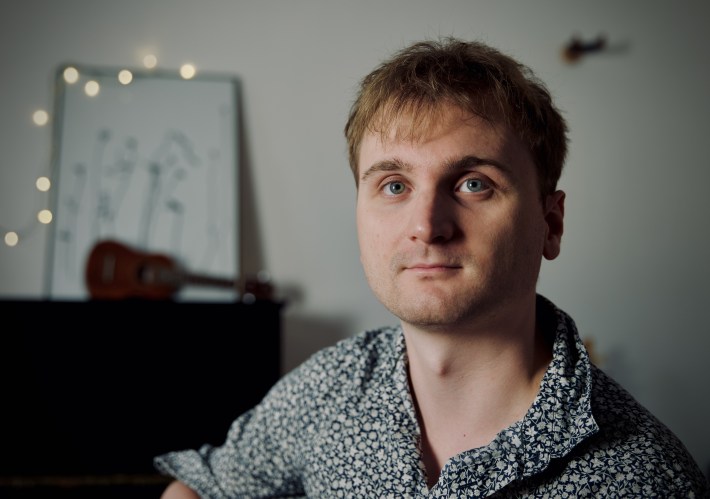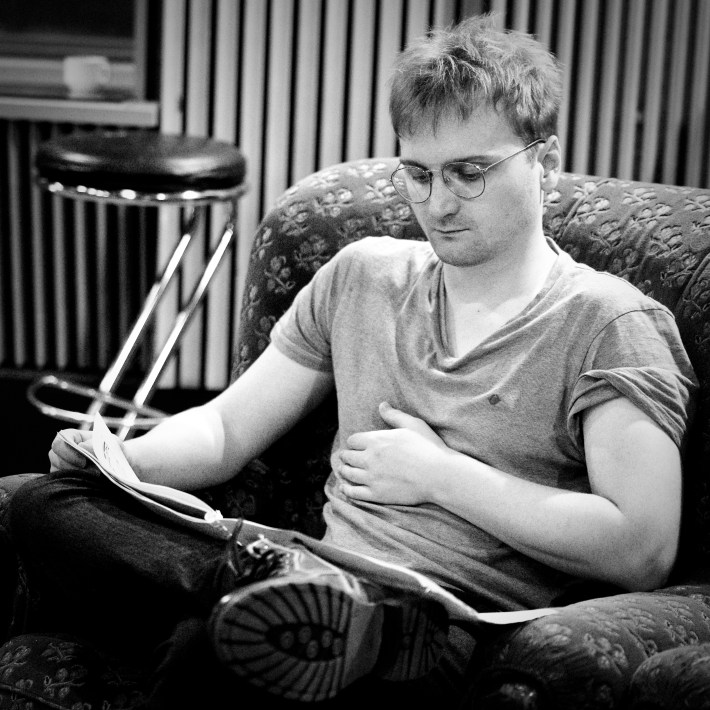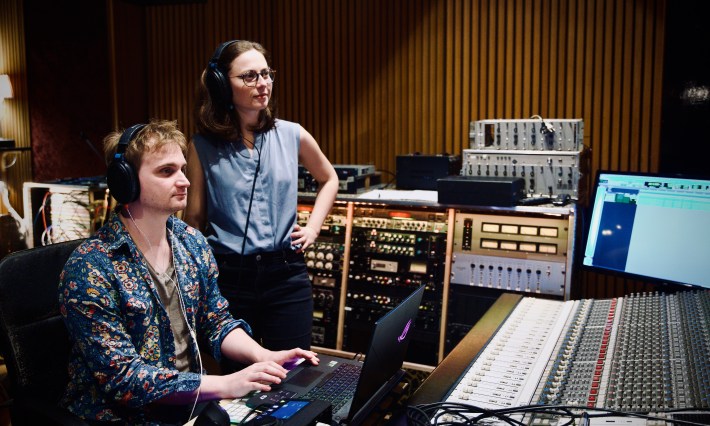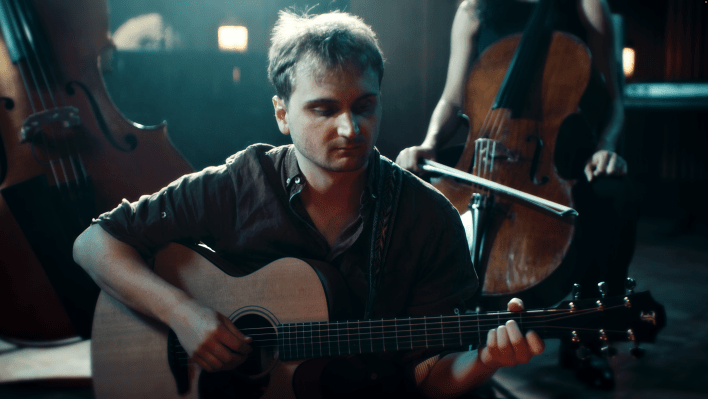In the blink of an eye, Clair Obscur: Expedition 33 has gone from a cool-looking RPG folks wishlisted after the 2024 Xbox Games Showcase to the talk of the town, with a live-action film adaptation already in the works. Its release coincided with The Elder Scrolls: Oblivion remaster, making it a tough time for another game to hold its ground. We spoke highly of its early goings on the podcast, and I gave it a thumbs up in my review, though I’m still wrapping my head around the full RPG spectacle of its final act biting off a bit more than it could chew for my liking.
While a not-insignificant portion of the internet is embroiled in debates over whether Clair Obscur’s runaway success stems from its refreshing flavor of turn-based RPG mechanics, conveniently overlooking the stellar lineup of similar RPGs we’ve been spoiled with lately, or gaming’s latest case of recency bias, one thing is indisputable: its soundtrack slaps. I spoke with composer Lorien Testard about how he went from making tunes once a week on Soundcloud to landing his first game project.

This interview has been lightly edited for clarity.
Getting started
Isaiah Colbert: What was the process like getting approached by director Guillaume Broche to collaborate with Sandfall Interactive on Clair Obscur five years ago?
Lorien Testard: Usually, I write one song a week, so it was a really long process for me. After one year [of posting songs], Guillaume found me on a web forum about indie games. He listened to some song off my SoundCloud, and he really liked what he heard, and he loved my music. So he asked me to do the job for Expedition 33.
IC: What details were you given about the game to help guide your approach to crafting music that complements its narrative and setting?
LT: I was really free. I created what I wanted and what I liked. But we had the same tastes on the video game — the melancholia and the nostalgia we wanted to put into the soundtrack, a sensitivity of sadness and a lifting up [element too].
IC: Is there a particular emotion or atmosphere you strived to convey through the music?
LT: It depends on which la ville (town) you are in. When you are in the Gestral village or just at the start, it’s not the same atmosphere. It was like seeing each part of the game and thinking, “What will be the best fit?” When you were in the “Gublu”, we had a lot of submarine sounds and some crazy ideas for the water and aquatic stuff. But after, in “Sciel”, for example, we have more beautiful, poetic, dense, soft music to help describe the environment.

IC: I read that you alternated between your home studio and working with the Curieux Orchestra at the Midilive Studios in Paris while making the game’s soundtrack. Did you use any unique instruments or production techniques that worked best in one setting over the other?
LT: I was working for five years in my own studio, and then we chose a section of tracks and we did a little orchestra session. It’s not like I did a back-and-forth with the orchestra. It was only three days at the end of the project, so [the soundtrack] was really made at my own place.
And, yeah, you have a lot of musical techniques. I love to find my sound on the soundtrack. For example, I really like to layer the piano sound of the game. Sometimes, it's like 12 different pianos to do the sound of one track. I really love this concept of taking the part I like in the virtual instrumental piano and layering it with the other part I like to have a distinct sound for a piano track.

Finding sound through inspirations
IC: With Clair Obscur being your first contracted game, how did you manage the stress while stepping into the role of sonic leader for the project? Did you face any creative blocks or challenges, and how did you work through them?
LT: Honestly, at the start, we're like, we are three [songs] at the start. Then six. Then 10. So I didn't feel any pressure at all, because it was a thread on Discord, and we did the game and the soundtrack together at the start. And then we hired and grew bigger. From the beginning, I was here to write, so I didn't feel like “It's now my job.” It was a dream project to be with your friends and create music from the start.
IC: Were there specific moments during the process where inspiration struck you?
LT: It's happened often. Every song has a particular story that I really love. So for each song, I can say there’s a story.
IC: One song that struck me was the “Sirene” theme. It reminded me a lot of the music I’d hear in Nier Automata or Nier Replicant, where it goes into a ballet kind of playfulness. But it’d also have moodier, darker undertones to it with a boss fight that kicked my ass.
LT: With “Sirene,” I wrote it early in the project, and I wrote the guitar part. So all is coming from the guitar. The main idea and concept for “Sirene” was the softness of the whole environment and the bosses. Then I added a low recorder to make the wind and environment like a circle.
In the level, you have the boss right at the start. You see it, and you have to do the whole level to be in front of her. So across the entire level, we wanted this voice that the player can hear everywhere. So we had the voice of Alice [Duport-Percier], the singer of the game, and the three elements together, and we created the track. Guitar first, then the low recorder, and then the voice everywhere in the level.

IC: How did your approach to composing evolve over the five years you spent working on the game?
LT: I knew pretty early the scope of the universe, the level, and the script, so I made my dream soundtrack. For example, I would take a level and would want to write three environment tracks, two battle themes, and one boss theme. I do that for the whole game and — one by one — I’d write the track for five years until the end.
IC: Clair Obscur proudly draws inspiration from iconic RPGs like Lost Odyssey and Final Fantasy IX, while adding its unique twist to the genre. What gaming soundtracks from childhood shaped your musical taste, and how did those influences come through in the tracks you created for the game?
LT: I tried not to be influenced by other soundtracks. I was focused on my music for five years. But for sure, I have a lot of soundtracks I love from before. I love the music of Joe Hisaishi from Studio Ghibli. I listened to him often when I was younger. And I love Zelda music. I’m really a fan of Zelda's sound and universe. So maybe we can feel my past taste in my music now. I also listen to a lot of French songs and French artists, so we can feel it too in the soundtrack.
IC: Who were some of those French artists?
LT: I love Alain Bashung.
Picking favorites and getting Ben Starr to sing
IC: Clair Obscur’s soundtrack clocks out at a whopping 8 hours plus, with 154 tracks, some of which are remixes/permutations of a previous theme. Is there any specific piece of music from the game that stands out as a personal favorite, or one you're especially proud of?
LT: It's really hard to tell my favorite soundtrack, but I could give a story of the most challenging. I wrote three songs —“Une vie à peindre,” “Une vie à t'aimer,” and “Une vie à rêver”— three eleven-minute tracks that were important for a confrontation in the game. They’re really important songs, and I spent a lot of time writing them with Victor Borba and Duport-Percier. It was challenging to create, and it took me the most time of the whole project.
When you discover it in-game, the cutscene and all the transition between the songs happens. It creates so much emotion to feel that. I have seen some reactions of players when they discover that’s in-game. It's insane to see that it works so well, because you have silence, and then you have something that happens, and the track is coming, and it's so powerful. I really love it.
And “Aux Lendemains non Ecrits,” the one before the end. It’s a favorite song of my father. I shared the eight hour soundtrack with my father. He listened to every song and said to me, “I really love the lyrics of this song,” and I think about it too. I’m proud of this lyric. It’s authentic and really simple. But for me, it worked well for where the song is put. In English, it’s “To Unwritten Tomorrows” and the song plays at a special place.

IC: Even with my limited understanding of music, I noticed that Clair Obscur’s soundtrack features a leitmotif — a catchy “Dim dim dam dada” melody — in Lumière’s theme, performed by vocalist Duport-Percier. Where did the inspiration for this earworm of a tune come from?
LT: “Lumière” was one of the first tracks I wrote for the project. I wrote it on the guitar first and I really love the leitmotif of the song, because we had an internal playtest of the game, and we had a first draft of Lumière and Gustave walking on the roof of the city, and we put the credits of everyone who worked on the game. When I saw it, I knew it was the perfect atmosphere for “Lumière.” When I found that I really liked it, I decided to [use it] for the whole part of the game.
For example, we have the melody in “Gustave” because it’s his city, it's like his own city, and he cares about those who came before and those who come after. So, we find this motif in his team, and we find it often in the game.
When you come back to Lumière, it's not the same. So the song could not be the same after what happened. But in the camp, we have some variation to remember where they came from and where they must go. You always have the Paintress in front of you, so the melody is really powerful to give this feeling of “My home is at my back and I have to think of it and protect it, but I have to move toward the adventure in front of me.”
IC: Are there other recurring themes or motifs within Clair Obscur’s music that carry deeper, symbolic significance?
LT: The main motif of the game is “Alicia.”We find this melodic motif in a lot of songs. I think “Alicia” is the most used theme in battle, and then we have “Lumière.” For example, when you had the music of the Gommage, it plays. It’s the music of Sophie when she turns to dust. And I use it for another place in the game, but it’s become the theme of Sophie.
IC: As is tradition in RPGs, each party member in Clair Obscur has their unique musical theme. How would you describe these character themes, and what approach did you take to give each one its own distinct sonic identity?
LT: It's so funny to do that. Honestly, I see that like a gift. I've played so many games, so I know when you write a theme for a character, it's for the life of a character. So it's really important that I give all my love to do that. I spent a lot of time looking at the concept art and trying to feel the mood and the whole soul of the characters.
For example, “Gustave” was written really late in the production. We can think [of it as] one of the first songs, but “Gustave” was written six months ago. It's late because, at first, I thought “Lumière” would be the “Gustave” theme. But one day, I found Gustave's piano melody, and I knew it was his, so we put it in the game.
IC: How about Maelle’s theme?
LT: Maelle’s theme was special. It's the last theme on the soundtrack, and I put it in last for a good reason. You understand why, but seeing the song take life was special because it's the last song we recorded with the orchestra. We filmed the session with a dancer, and when I saw the dance with the whole song we recorded with a beautiful voice in French and the full orchestra, I knew it was like my farewell to Maelle. It was emotional for me to see it end. I could not have ended up happier with Alice and Victor’s help.
IC: We’ve talked about collaborating with incredible vocalists like Devil May Cry 5’s Borba and mezzo-soprano Axelle Verner, but the score also saw gaming’s babygirl, Ben Starr, join in too. I’ve heard Ben’s involvement might have come after a couple of beers, prompting him to lend his vocal talents to Verso and its soundtrack. Would you mind recounting how Starr’s musical debut came to be?
LT: It was a chaotic good proposition at Christmas. I wrote the song “Until Next Life” a year before meeting Ben Starr. The song is about Verso and what happened in his life. I told Broche it would be cool to have Verso’s voice actor singing it. We forgot about it, and then, one Christmas, I met Starr, and we shared a clip of the orchestration to show what we did. I remember saying, “Yeah, let’s go. I really want to do ‘Until Next Life’ with you. Would you like to try to sing?” He said yes, and the next morning, we recorded together. It was impressive to see him have a good instinct on the song, so we can have it feel really deep with the voices of Verso, and it works well in contrast with Alice, who is singing like an angel.
IC: Do you have any advice for aspiring composers looking to create music for video games?
LT: I will advise them to play like [they’re] a composer. For example, I thought, “What does a composer do?” Every day, a composer writes music. So I wrote music every day for video games. After playing [music] for a long time, you become a composer.


